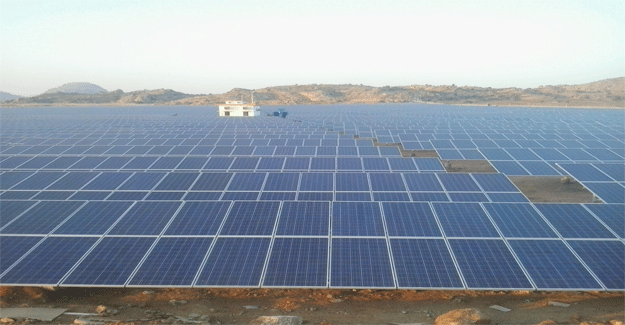Solar Energy Can Ensure Textile Sector’s Long-term Energy Needs And Viability
Solar Energy Can Ensure Textile Sector’s Long-term Energy Needs And Viability

Solar energy sector in India is in a boom today as large projects are being constructed under the support from the government and cost of solar power plants has drastically reduced over the last five years. Experts in the field of solar energy were of the opinion that governments should continue to incentivise the use of solar energy in power intensive sectors like textiles till solar power generation costs achieve parity with that of conventional sources of energy.
Elaborating on this, Prafulla Pathak, Secretary General of Solar Energy Society of India, said, "The Central and state governments have mandated the use of clean source of energy in terms of percentage of other modes of energy used. In some states, the governments have also been funding the viability gap between the high cost of clean energy and the cost of conventional energy. Some of the weaker states have limitations when it comes to incentivising. However, with progressive reduction in technology cost this will be resolved in the long run."
When queried about how the textile industry can harness solar power, Pathak said, "It's an understatement that the textile industry requires lot of power. This power can be made available through a solar photovoltaic power generation unit. Right now it has the constraint of availability of power in day time only. However, if production by this means of electricity generation offers cost advantage over the conventional source of power, the same can be put to good use in a scalable fashion."
Emphasizing that accrual of cost advantage was only a matter of time, he added, "Textile industry has drying and dyeing activity. The boiled water or fluid can be made with the help of solar concentrators. In addition, the engines that are possible to be run on steam can be done so with solar thermal back-up. This will be helpful to the textile industry in a big way."
Nilesh Jagtap, a solar industry professional from Vinayak Engineering Services, dwelt on the costing per kilowatt of solar power. He was of the opinion that at Rs. 3 per KWH, solar energy would be on par with wind and hydro energy. However, the maintenance costs of wind and hydro plants are much higher than that of solar plants."
To emphasize his view, he added, "Pan India the irradiation levels of solar energy are higher than other countries of the world. Life of solar plants is more than 25 years. This is what drives the production cost to as low as Rs. 3 per KWH. Though the initial cost of investment is high, as earlier stated, there is minimum maintenance. Besides, there are no movable parts."
Talking about government support being enhanced for usage of solar energy in the textile sector, he said, "The state governments have already taken cognizance of being supportive and come out with a net metering policy at different levels. In addition, they can provide other promotional benefits like tax holidays, no transmission wheeling charges and smooth bill adjustments." Touching on the macro-level, Pathak said, "Government support apart, the industries which are short of electricity due to their location or other supply constraints now have an option by way of solar energy. In solar power generation, solar thermal applications, hot air preparation and steam generation are different ways to put to good use the abundantly available solar energy. These can be put to use in the same location for a textile unit in innovative ways."
From the long term point of view, the textile industry should have interactions with organisations like Solar Energy Society of India that was established in 1978 and come out with new innovative concepts, he added.
When queried about the smaller players in the textile industry who will find it difficult to make the one time heavy investment on solar power plants, the views of both Pathak and Jagtap were concurrent. Pathak said, "Smaller players will obviously have smaller requirements. They can conduct a due feasibility study and invest wisely. To make things clear, solar cells are tiny. The more the number of cells, the more the output is the case with them. Cost depends on size and number of cells. Smaller segments will have smaller needs and will be able to put this technology to use in a cost-effective manner."
Jagtap echoed this opinion stating, "Small power looms can opt for solar energy as per their consumption pattern and electricity rates. Consultants like us can guide them in selecting the capacity of the plant they must opt for." On a concluding note, Pathak said, "The energy regulators have always favoured the development and growth of the solar energy sector in India. They have come up with various options in the past 7-8 years to boost this new and upcoming sector. The most popular segment of the solar energy sector is to produce electricity with the help of solar photovoltaic cells."
"This is against the backdrop of shortage of electricity in the country a few years back. This resulted in the growing per unit cost of electricity. In addition, the subsidies on account of electricity to the weaker section from community burdened the high end sector where the industry is."
"This resulted in higher tariffs for industry. Naturally, when industry found that solar based electricity is a better option, they got attracted to it. However, this has negative effect on electricity distribution companies. The highly paying consumers of these electricity utilities have gone away from them."



 textileexcellence
textileexcellence 







